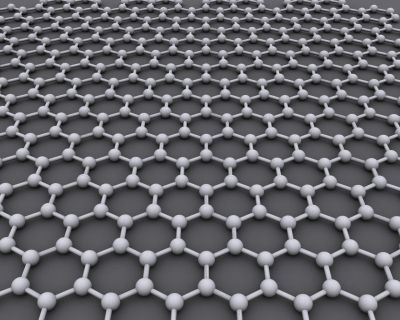Exfoliating monolayers: opening a gateway to industrial solutions

Graphen
By AlexanderAlUS (Own work) [CC BY-SA 3.0 (http://creativecommons.org/licenses/by-sa/3.0) or GFDL (http://www.gnu.org/copyleft/fdl.html)], via Wikimedia Commons
At Trinity College Dublin Professor Jonathan Coleman and his team are creating a ‘gateway technology’ in material science that, if successful, will open the door to a host of industrial applications. Their research focuses on producing two-dimensional monolayers of a variety of materials by exfoliation. Prof. Coleman's TEDx talk will introduce the audience to this technology and demonstrate how to make the 'wonder material' graphene in a kitchen blender.
Prof. Coleman first demonstrated how to create nanomaterials in this way
by producing graphene – one atom thick monolayers of carbon with unique
electronic properties. He showed that subjecting bulk graphite to sonic
energy while suspended in a liquid causes carbon monolayers to
‘exfoliate’ from the graphite. This produces a liquid dispersion of
graphene monolayer flakes. In 2010, he received an ERC Starting Grant to
expand his award-winning research and demonstrate its wider potential.
Indeed, it would take the weight of an elephant balanced on a pencil to
break through a sheet of graphene the thickness of cling film.
Prof. Coleman’s team is now applying this technology to many other
industrially important materials, for example by exfoliating monolayers
of tantalum sulphide, a metallic conductor; boron nitride, an insulator;
and molybdenum disulphide (MoS2), a semiconductor. These form the
building blocks for nanoelectronics applications – but the significant
element is that it is done in the liquid phase. So by allowing the
suspended monolayers to settle out onto a surface and form a continuous
film, the team are producing stacked layers of conducting, insulating
and semiconducting films, of controlled thickness and with well-defined
electrical and optical properties – from which a host of devices such as
semiconductors and detectors can be manufactured in bulk.
And the potential of this research is not only in electronics.
Monolayers of molybdenum disulphide are 20 times stronger than steel, so
it can be used to strengthen other materials, such as plastics, which
are also processed in liquid solvents. Prof. Coleman’s team have
demonstrated exactly this by co-depositing a small amount of MoS2 with
an everyday polymer plastic – which more than doubled its strength!
Plastics are ubiquitous in structural applications – for example as
car components. So doubling the strength means that half the material is
needed – reducing the amount of oil required to produce plastics in the
first place, and reducing the weight, and thus the emissions from cars.
This is why Prof Coleman’s research is described as a ‘gateway
technology’ – if they can demonstrate industrially tractable
applications, then the potential take-up is enormous.
In advance of his TEDx talk, Prof. Coleman said: "I am very much
looking forward to sharing the latest developments in material science
with the audience at TEDx. The discovery of graphene has opened a door
to countless potential real-world applications and I think the people at
TEDx will find the prospect of creating two-dimensional monolayers of a
variety of materials as exciting as I do!"
Listen to Prof. Coleman discuss these developments during the TEDx Brussels ERC session at 2.15 pm.
published: 2015-01-27

